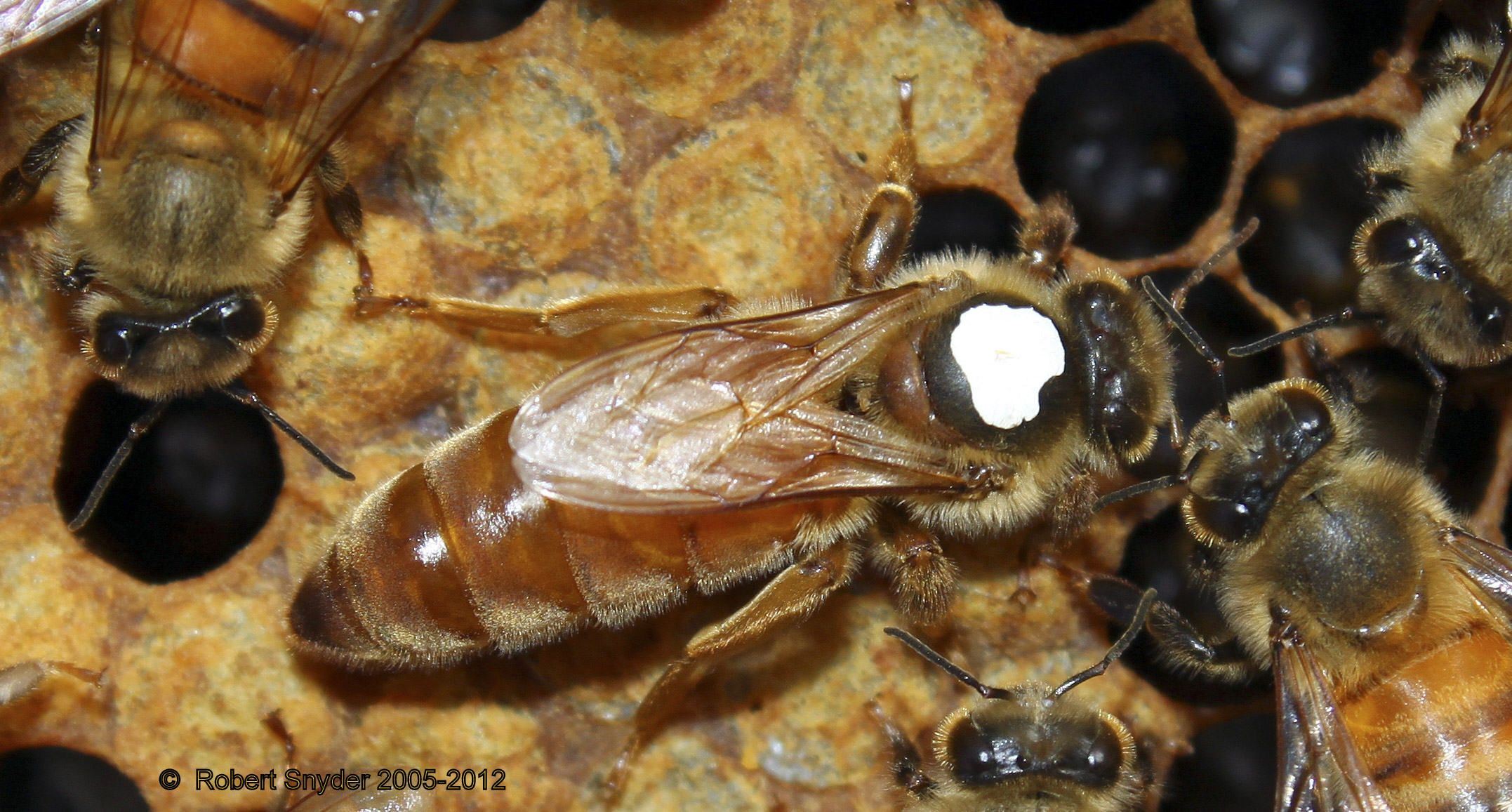Lack of brood in colony; capped brood only without any open brood and with no apparent eggs present.
Queens normally lay eggs appropriate for the season. Queens in full egg laying are at their largest (folded wings appear to cover only half the abdomenabdomen:
the segmented, posterior (third) part of the bee body that contains heart, honey, stomach, intestines, Malphigian tubules, reproductive organs, and sting length). During the season, queens may abruptly reduce or shut down their egg laying due to colony exposure to pesticides, abrupt loss of adult nurse bee population (because of pesticide poisoning or starvation), in response to lack of adequate resources (due to seasonal or environmental conditions), in response to heat or food stress, or for unknown reasons. Queens in final preparations for swarming or in colonies being treated with certain chemicals for mite control may have very limited or no egg laying. Such queens may appear small and stubby.
length). During the season, queens may abruptly reduce or shut down their egg laying due to colony exposure to pesticides, abrupt loss of adult nurse bee population (because of pesticide poisoning or starvation), in response to lack of adequate resources (due to seasonal or environmental conditions), in response to heat or food stress, or for unknown reasons. Queens in final preparations for swarming or in colonies being treated with certain chemicals for mite control may have very limited or no egg laying. Such queens may appear small and stubby.
Queens in colonies in northern climates routinely halt egg laying for as much as three months in late fall or winter.
Determining the probable reason for queens shutting down during the active season is difficult. Feeding sugar syrup or protein patties or reducing stressors may help colonies recover.
Moore P. 2019. Honey bee queens: evaluating the most important colony member. Bee Health. Accessed 2023. https://bee-health.extension.org/honey-bee-queens-evaluating-the-most-important-colony-member/
The Apiarist. 2020. Queenrightqueenright:
a colony with a healthy, worker egg-laying queen; the opposite of a queenless colony … or not. The Apiarist. Accessed 2023. https://www.theapiarist.org/queenright-or-not/
… or not. The Apiarist. Accessed 2023. https://www.theapiarist.org/queenright-or-not/